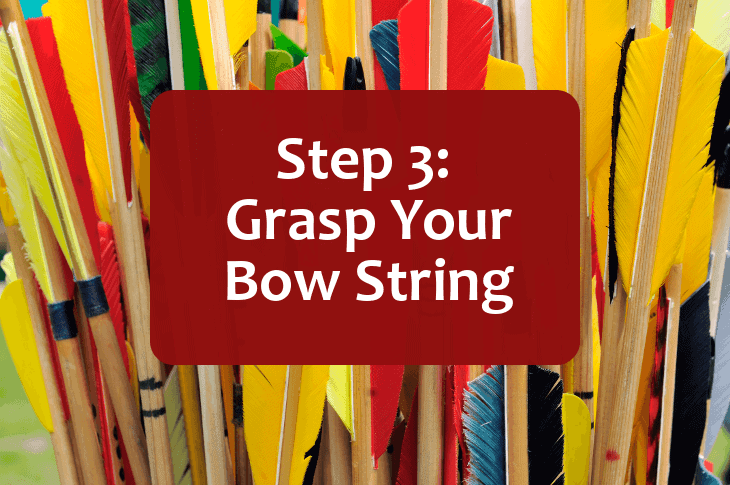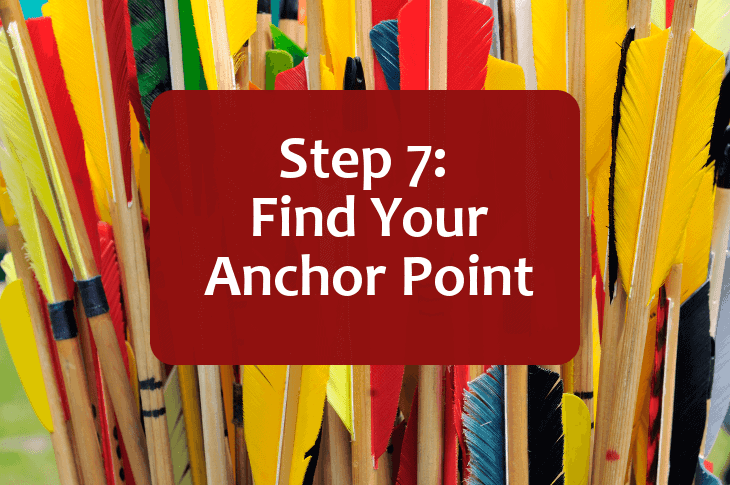Welcome, gang! This is Step #9 in our “How to Shoot Your Bow and Arrow” series. In this step, we’ll discuss the method of releasing your arrow. If you’d like to see all the steps in the sequence, jump back to the “How to Shoot Your Bow and Arrow” post.
One quick note: in the post below, I’m mainly talking about the release for a recurve bow, but if you’re using a compound bow, all the same principles apply. I address compound bows specifically in one of the sections below.

What to Do During the Release
There’s a lot about archery that is more complicated than it looks, so when there’s a step that is as easy as it seems, that’s a wonderful thing. And that describes the first part of the release: when you’re ready to shoot, you simply release the tension in your bow string fingers, and let the arrow fly. That’s it! Relax all three fingers at once and let the string jump forward by itself. You don’t need to do anything but let go—the energy stored in the limbs at full draw will pull the string forward with great force, so there’s nothing you need to do.
The second part of the release is a natural continuation of the first: after you relax the tension in your fingers and the string is released, three things should happen:
- Your hand will gracefully fall back a little bit;
- Your chest will expand ever-so-slightly, and open up a little bit; and
- Your back muscles will contract ever-so-slightly and your shoulders will come together a little bit.
This process of letting your hand brush past your face is called a “dynamic release.” There is a type of release where your hand does NOT fall gracefully backwards—and that’s called a “static release”—but it’s not a great option for beginners, because it’s very difficult to get right. “Best practice” is to start with a follow-through release.
For a great example of your string hand falling back gracefully, check this video out (jump to 0:28 for a few examples):
For a great example of the chest expanding and the back muscles contracting, take a look at this video, at 3:20 or so:
That expansion / contraction is nothing dramatic, but it’s an important part of the draw, so have a range staffer or coach or friend give you an eye and make sure you’ve got it down.
Some Other Notes About the Release
The Release Isn’t Done When Your Release the String; It’s Done After the Follow-Through. After you’ve let go of the string and your hand flows backwards and your chest expands a little, that’s when the step is coming to an end. The follow-through is an important part of the release.
No Plucking the String. All you have to do is release the string; no theatrics, no forcefully bringing your hand back. You’re just letting go—that’s it!
No Pushing the Bow. Both new archers and experienced archers can fall into the tendency of moving the bow ever-so-slightly after the arrow has been released, and that—like absolutely everything else!—can mess up your shot. You want to keep your bow arm as still as possible as the arrow clears the shelf and moves toward your target. The bow will likely dip forward a little, especially if you’ve got a very relaxed grip, and that’s totally OK.
If You’re Using a Compound Bow and a Release Aid
When it comes to the release, compound users are kind of lucky: they can select wrist straps, finger releases, and automatic releases, and those result in a really clean, really smooth release of the bow string—much more clean than a finger tab or a leather glove.
This post isn’t about how to use a release aid—I’ve written about that here—but instead about the “Release” step, and the motion of your string hand. With that in mind, everything said above applies: you reach your anchor point, you release the arrow, and then perform the follow-through, where your string hand relaxes backwards, your chest expands a little bit, and your back contracts a little bit.
There is one really important note that I need to share about compound bows, though: if you’re using a release aid with a draw, when you draw, keep your finger BEHIND the trigger, to make sure you don’t release an arrow by mistake. When you’re ready to release, bring your finger over the trigger, and release the arrow.
Oooooooooooooh That Feels Good!
I love, love, love that feeling of an arrow leaving my fingers. I love it.
After that happens, there’s only one thing left to do! Step #10!




